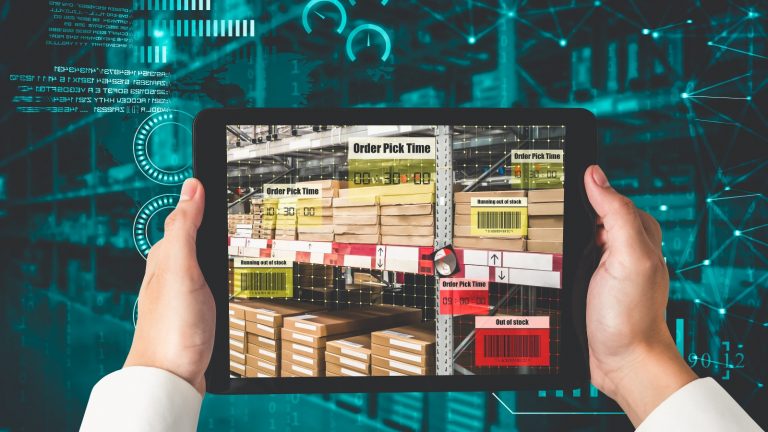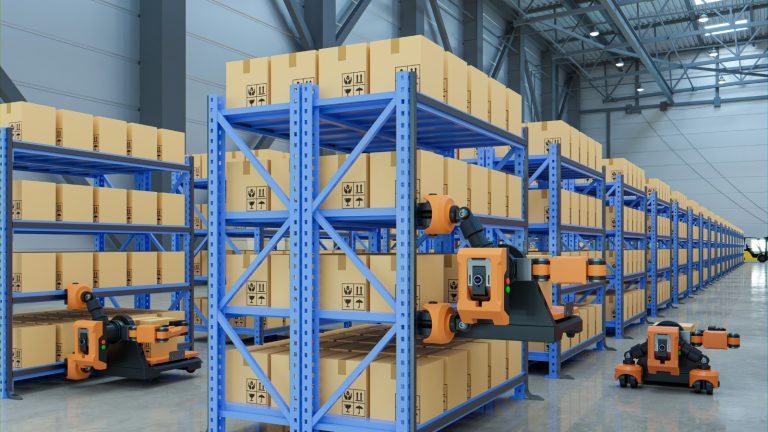It is not easy to take the first step when you want to make a brave movement. This theory applies to the manufacturing industry as we see many manufacturing businesses have started relying on technology when it comes to their operations. ‘Smart Warehouse’ is one such technological advancement that is revolutionising the business arena completely. However, you can not start this movement all of a sudden as it needs some adjustments in advance.
In this article, we delve into the main facts that you should consider before transforming your usual warehouse process into a smart warehouse.
What is a Smart Warehouse?

A Smart Warehouse is a technologically advanced facility that employs a range of cutting-edge technologies to optimise and streamline its operations. It integrates automation, IoT (Internet of Things), AI (Artificial Intelligence), and data analytics to enhance inventory management, improve efficiency, and ensure real-time visibility. Smart Warehouse technology enables real-time monitoring, predictive maintenance, and data-driven decision-making.
It can include features like automated material handling, RFID (Radio-Frequency Identification) for tracking inventory, and sophisticated software systems for inventory control and order processing. This fusion of technology creates a highly efficient and responsive warehouse environment that adapts swiftly to market changes, ultimately benefiting both businesses and customers.
Why Do Manufacturers Need a Smart Warehouse?

The importance of a smart warehouse can not be limited to one or a few aspects. The power of this technology goes far beyond that. Manufacturers are increasingly recognising the indispensable value of Smart Warehouses as a strategic asset in the modern supply chain. These intelligent hubs offer manufacturers a competitive edge, transforming conventional warehouses into dynamic centres of efficiency, connectivity, and responsiveness.
The driving force behind the need for Smart Warehouses lies in their ability to optimise critical aspects of manufacturing operations. Real-time data from IoT sensors allows for precise inventory management, reducing excess stock and ensuring products are readily available when needed. Automation and robotics streamline processes, reducing error rates, labour costs, and processing times.
Plus, Smart Warehouses empower manufacturers with predictive analytics and data-driven insights, enabling them to foresee trends, fluctuations in demand, and potential issues. This anticipatory capability results in better decision-making, efficient resource allocation, and a more agile response to market changes. Furthermore, the integration of AI and machine learning enhances quality control and order accuracy. Smart Warehouses also facilitate the tracking of products through the entire supply chain, ensuring transparency and accountability. In an age where speed, accuracy, and adaptability are top priorities, Smart Warehouses have become a vital component in manufacturing, offering the promise of improved overall efficiency.
Top 6 Things to Consider Before Transforming into a Smart Warehouse

Comprehensively Examining Current Operation
Before embarking on the journey to transform a traditional warehouse into a Smart Warehouse, it is necessary to comprehensively examine current operations. This assessment involves scrutinising existing processes, systems, and technology infrastructure. It necessitates a clear understanding of the warehouse’s layout, its existing equipment, and the current data management protocols.
Furthermore, a meticulous review of operational bottlenecks, inventory management practices, and employee workflows is essential. By undertaking this critical examination, manufacturers can pinpoint areas where Smart Warehouse technologies can be seamlessly integrated, ensuring a smooth transition while optimising efficiency, reducing costs, and unlocking the full potential of a data-driven, interconnected warehouse ecosystem.
Defining Business Goals
Once you have a comprehensive understanding of your current warehouse operations, the next crucial step is defining your objectives for the transformation into a Smart Warehouse. This involves clearly outlining what you aim to achieve through this transition, whether it is enhancing customer service, boosting inventory accuracy, reducing operational costs, or achieving a combination of these and more.
Setting well-defined goals is important as they serve as a compass, guiding the selection of technologies and strategies that will best align with your business objectives. This strategic approach ensures that your Smart Warehouse implementation is not only technologically robust but also purpose-driven, delivering tangible benefits and a competitive advantage that resonates with your overarching organisational vision.
Selecting Right Technologies
The next phase in the transformation towards a Smart Warehouse emphasises the critical selection of intelligent technologies that are best suited to realise your predefined objectives. This can include a set of innovations, ranging from automated guided vehicles for streamlined material handling and advanced warehouse management systems for precise inventory control to the integration of IoT devices for real-time tracking and comprehensive data visibility.
When evaluating these technologies, it is imperative to consider their compatibility with your current systems, ease of implementation and operation, scalability to accommodate future needs and the potential return on investment. This thorough assessment ensures that the chosen technologies seamlessly align with your Smart Warehouse vision, enhancing efficiency and ultimately driving the achievement of your targeted business outcomes.
Implementing into the Warehouse Process
Following the selection of the appropriate technologies, the next step revolves around their seamless implementation within your warehouse. This might entail retrofitting your warehouse space to accommodate new equipment, integrating sophisticated software into your existing systems, or deploying IoT devices for enhanced data visibility.
Most importantly, adopting new technology signifies a huge transformation, necessitating thorough planning to minimise operational disruption. Careful execution is key to ensuring a smooth transition and the realisation of the full potential of these technologies, leading to optimised efficiency at the end. It also helps with heightened productivity. The Smart Warehouse aligns seamlessly with your overarching business goals.
Training and Support
While implementing new technologies is a significant step, ensuring that your staff can effectively operate and manage these systems is equally important. It is crucial to invest in professional training programs to equip your team with the knowledge and skills needed to proficiently handle new equipment, utilise updated software, and adhere to revised processes. Furthermore, having access to ongoing technical support is also important to swiftly address any potential issues that may surface with these innovative systems.
The combination of comprehensive training and dependable support ensures that your workforce is not only ready to embrace technological advancements but can also maximise their utility. It will help in boosting the integration of technology and human expertise within your Smart Warehouse environment.
Reviewing and Optimising
Upon the successful launch of your Smart Warehouse, it is essential to establish a routine for regular performance evaluations. It supports analysing the data collected by smart systems to gain in-depth insights into warehouse operations, identifying areas for further enhancement and making necessary adjustments. This ongoing review and optimisation process is quite important in ensuring that your Smart Warehouse maintains its efficiency and effectiveness over the long term.
When you encourage continuous improvement driven by real-time data analysis, your warehouse can adapt to evolving demands quickly. It helps in minimising operational bottlenecks and remains stronger, ensuring that it continues to fulfil its role as a cutting-edge, responsive backup plan for your broader supply chain and business strategy.
Cerexio Smart Warehousing Technology

Cerexio Smart Warehousing represents a powerful and collaborative technology, it relies on the Industry 4.0 technologies such as AI, Predictive Maintenance, IIoT, and Digital Twins to revolutionise warehousing and logistics. This transformation ensures a smarter operational background, making it a necessity for industrial businesses in the modern age.
Enhance Operational Success with the Right Strategies

It is not easy to achieve your business goals if you are afraid of making brave movements towards your growth. The only way to stay away from burden is by adopting the right strategies at the right time. With a set of outstanding strategies in your hand, you are just a few clicks away from your expectations.
